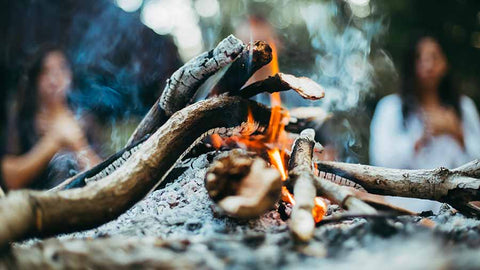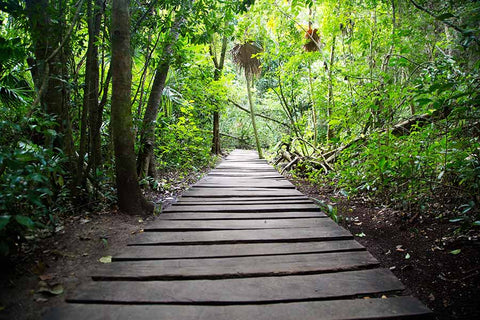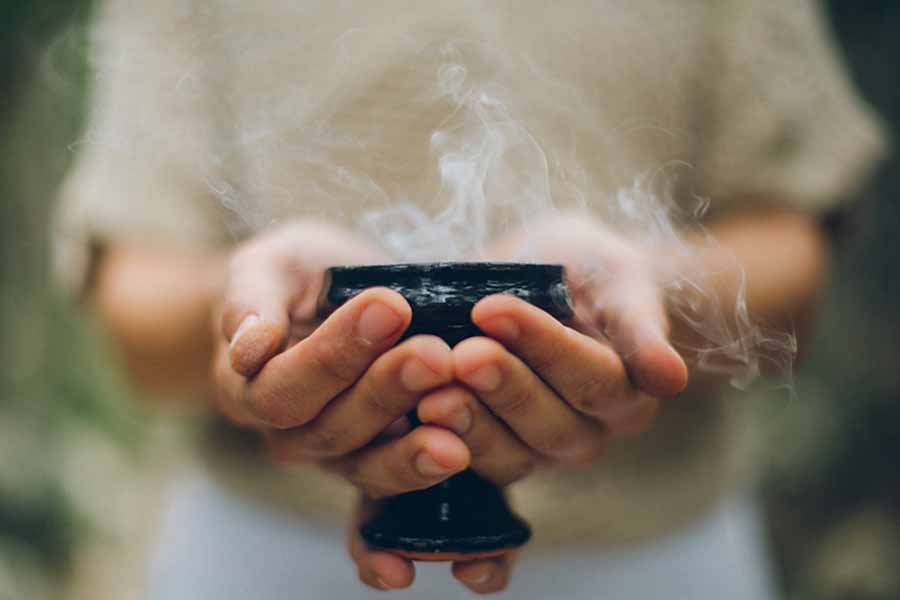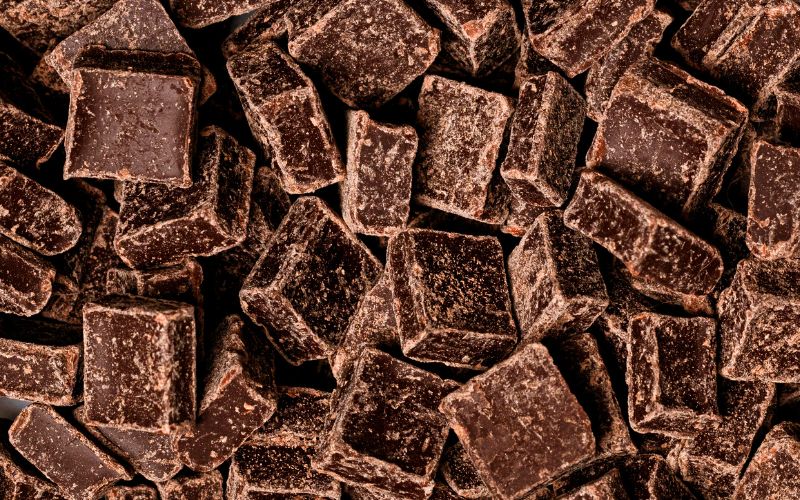Many people ask what is a real or authentic cacao ceremony. We also wondered ourselves what that was. We were on a mission to discover and explore if there was anything that was truly as authentic as to how the Mayans used cacao in a ceremony.
List of Topics
>Origin of Cacao Ceremonies
>How was Cacao Used in Ceremony?
>How is Cacao Used in Ceremony Today?
>Is Cacao a Psychedelic?
>The Rise in Popularity of Cacao Ceremonies
>Why Go to a Cacao Ceremony?
>How To Choose the Right Chocolate for the Ceremony
>What is Ceremonial Cacao?
>How To Prepare the Right Chocolate for the Ceremony
>The Varying Renditions of Cacao Ceremonies
>How We Perform Our Cacao Ceremonies?
 📷: Luz Mendoza
📷: Luz Mendoza
Origin of Cacao Ceremonies
Cacao ceremonies originally served as religious rituals for the ancient Native Mesoamerican cultures. Used as a tool to lift the spiritsof the soon to be sacrificed in the Aztec kingdom, required in the marriage ceremony due to its link to fertility, and even a part of the baptism ceremony and the birth of the child. Cacao in the ancient Americas was used in virtually any ceremony of importance.
How was Cacao Used in Ceremony?
Originally discovered by the Olmecs in 1500 B.C. and a staple in the Mayan and Aztec cultures for centuries, cacao had a place in these empires as a sacred, elite, and ritualistic plant. Present in Aztec mythology, cacao was often used in sacrificial ceremonies to lift the spirits of the soon to be sacrificed. Aztec mythology even states that God created man from maize and cacao among other plants brought from the “Mountains of Sustenance.” Even in Mayan mythology the importance of cacao remains with the God of Maize being birthed from a cacao pod. In Mayan mythology, cacao is also one of the products used to create humanity, and Mayan Gods are even stated to have bled onto cacao pods, intertwining cacao and their blood. As an offering of a sacred nature to the Gods, cacao held an importance in both cultures that relates it to both jovial mental states and an essential part of the human makeup.
Far from just a religious commodity, cacao was often used for various medicinal purposes. The flowers were cited as a remedy for fatigue, while the beans were used in conjunction with other plants to help alleviate fever.
With the arrival of cacao in Europe, many new medical uses for cacao were discovered. These uses often employed cacao to improve digestive issues, as a nutrient to treat abnormally thin and weak patients, and as a stimulator of the nervous system to improve mood and virility.

How is Cacao Used in Ceremony Today?
The modern Cacao Ceremony has been birthed out of the same ideas of the ancient cultures, being tools for rejuvenation and self-discovery. The ancient cultures, although continuously vanishing in the modern world, provide insight into a life more intertwined with nature and the spirit. Modern day Cacao Ceremonies, though not directed towards these ancient Gods, embraces the meditative properties of cacao, relaxing the body and clearing the mind for moments of pure self-reflection to ensue.
Is Cacao a Psychedelic?
- Cacao is labeled by FDA as GRAS (Generally Regarded As Safe). Remember, a Cacao ceremony is not a “trip” or drug-induced ritual. Cacao Ceremonies are a facilitator of self-reflection and spiritual awakening, allowing one to consider who you are, analyze one’s hopes, wishes, and dreams, and let go of the past in order to grow from it and build a better future for oneself and others.
The Rise in Popularity of Cacao Ceremonies
While no specific cause can be ascertained to the rise in popularity of Cacao Ceremonies in the western world, many testimonies of individuals hearing of Cacao Ceremonies and participating in them can be found online. This brings us to the obvious of different ways people enjoy their experiences. Individuals not afraid of the new experience have traveled to Latin America, participated in these ceremonies, felt transformed, packed these experiences onto their backs, and unloaded them onto the open communities of San Francisco, New York, Portland, and London. The residents of these towns, finding enjoyment and transformative experiences in the ceremonies spread the word, and soon Cacao Ceremonies became a staple in the yoga and Shaman communities. In Belgium, Dominique Persoone, convinced of the psychoactive effects of cacao, has developed a way to snort chocolate as a new method of consumption. While far from convention, and not being endorsed by us at ChocoVivo, it shows that the positive effects of cacao have spread throughout the world, sparking the minds of many to try any way to experience what the ancient Native Mesoamerican cultures experienced for thousands of years.

Why Go to a Cacao Ceremony?
Modern medicine has revolutionized the way we understand ourselves. Often, these medicines heal our bodies, but in this healing we may be neglecting our spirits. Cacao Ceremonies can facilitate the potential for one to regain that lost spiritual balance. Other experiences centering around this spiritual healing often rely on hallucinogenic or out-of-body experiences, but a Cacao Ceremony is a time of relaxation and self-reflection to provide an inner-silence allowing one to purvey the mind in peace and come to peace with the self. Through this peace, mental clarity can be achieved, and mental clarity is imperative to an improved daily life, uptakes in creativity, and self-guidance. The medicinal benefits of cacao have already been touted, but as recently mentioned, this ceremony is an exercise in mental health, and the health of a person starts with a healthy spirit, as a healthy mind allows for the preservation of the body.
How To Choose the Right Chocolate for the Ceremony
- Typically additive-free 100 percent pure cacao is used in order to experience the full bliss-effects caused by the Anandamide and Theobromine in cacao.
- Imperative in the choosing process is to make sure the chocolate is kept in a cool dry place and isolated beforehand, to prevent the chocolate from melting and/or absorbing the flavors around it.
What is Ceremonial Cacao?
Many people label Ceremonial Cacao as cacao blessed by a shaman and often times the cacao is organic and fair-trade. Most ceremonial cacao should be selected from a plantation where one understands the history and people involved at the cacao plantation. Otherwise, labels and stamps to verify a product can only do so much to convey the authenticity, transparency, and human relationship of the cacao.
How To Prepare the Right Chocolate for the Ceremony
- 2 to 4 Tablespoons of Ceremonial Grade Cacao
- ½ to ¾ cup of water
- We choose to forego any sweetener in order to experience the ceremony just as the Mayans did, keeping the cacao as pure as possible
The Varying Renditions of Cacao Ceremonies
- Some ceremonies involve strangers uniting in a circle to attempt to remove the sense of “otherness” in the room, allowing for a feeling of intimacy to be achieved among previously unknown people.
- Some ceremonies involve dances at the end or the middle of the ceremony with the movement facilitating spiritual awakening and self-transformation.
- Other ceremonies involve prayer and unified singing to further manifest feelings of togetherness and to bring forward wishes and positive energy.
How Do We Perform our Cacao Ceremonies?
Each ceremony is different. We cannot find any historical context on how the Mayans conducted a cacao ceremony. Depending on the season, the moon cycle, and facilitator of the ceremony, the procedures used to create a spiritual experience vary. Here at ChocoVivo we work to make our Cacao Ceremonies a holistic spiritual approach to self-reflection, improvement, and honesty. We worked with a wonderful Mayan Woman Shaman named Yazmin who conducts ceremonies at our Jesus Maria plantation in Tabasco, Mexico. We found this was the most authentic in terms of taking tradition that has been passed down from her ancestors.
It's important to understand that most information has been lost, and everyone adds their own special touch and element to their ceremonies. At ChocoVivo, we celebrate cacao, community and self. We combine our ceremonies with breathwork and sound.
We begin with the traditional Mayan preparation of Chocolate, which is simply chocolate melted in water.
- Then we begin pacing and controlling our breaths in order to calm and relax the body, allowing the mind to properly focus. This breath work is essential to the meditative process and allowing the Anandamide -otherwise known as the bliss molecule- to enhance the meditative experience.
- Following this exercise and practice, a very small piece of 100 percent cacao is eaten to acclimate the taste buds to the following steps.
- Next, a larger 100 percent chocolate square is placed into the mouth and left to melt. By allowing the chocolate bar to melt at its own leisure, the participant is allowed to experience the intimacy of melting chocolate and self-identify with this sensation. This melting representing the melting away and absorption of the previous person they are, allowing for the reintroduction and building upon of new experiences onto the tongue.
- Following this, a bowl of honey is prepared, and each participant is asked to dip a received cacao bean into this honey. The sweetness of the honey is meant to lie opposite of the bitterness present in the pure cacao bean, a bean that represents birth. Back in the days, the Mayans did not have sugar, but they had honey which represented
- Once dipped into the honey, the bean is then placed into the mouth, and the honey sucked off the bean, and then the bean chewed. The initial sucking is to facilitate the sweet introduction of birth. As the sweetness is honey and birth is the bean, life upon reception is full of giggles, and the repeated action of chewing is representative of the continued experiences of life.
- 100 percent cacao melted in water is consumed intentionally and simultaneously by all participants. Focusing on the complexities, textures and temperature of the drink helps to further guide entry to the meditative process.
- The extra chocolate is poured into the heart bowl for later use in the ceremony and placed on top of Selenite, otherwise known as a charging plate, allowing the vibrations and spiritual chakras in the room to be absorbed and recorded by the leftover chocolate.
- Next is the Sound Bath of Tibetan origin. It involves meditating persons reclining and letting the soothing sounds of instrumentation generally created through the usage of singing bowls, gongs, and/or drums to wash over them, the vibrations created helping to balance out one’s spirit.
- The heart bowl, being a part of this Sound Bath and filled with the leftover chocolate, is played as an instrument, the sounds emanating from the bowl, rising from the chocolate, consequently infusing the experience of the sound bath and ceremony with the experiences and intentions of each participating spirit.
- To conclude, the same chocolate used to enhance the spiritual reflections of the ceremony located in the heart bowl, that has absorbed the vibrations, hopes, and energies of each individual, is consumed in the traditional manner, symbolic of each individual continuing to build upon the past, to work towards the future, while not forgetting the past, but rather infusing the past to walk with the individual as a stepping stone for the times to come.
So what is Real Cacao Ceremony? As you can see, nothing is black and white. History and stories have been passed down from generation to generation and some people actually mix other traditions not related to Mayan culture in their form of cacao ceremonies. We once attended a cacao ceremony utilizing ancient Japanese rituals. So we say, do your research and find a place that provides the language, transparency, and authenticity of how cacao was meant to be. We believe that chocolate was meant to not only be eaten, but more importantly to bring together a depth of community over the beautiful language of the words Cacao and Chocolate. If you're ready for a Cacao Ceremony, check out when our next ceremony by clicking here.
[1]Coe Pg, 6
[1] https://www.cacaomama.com/cacao/history-spirit/
[1] https://www.cacaomama.com/history-spirit/
[1] https://www.ncbi.nlm.nih.gov/pubmed/10917925
[1] https://www.cacaomama.com/cacao/history-spirit/


 📷: Luz Mendoza
📷: Luz Mendoza


